
getting off the plane was
Kumamoto Castle [one
of the 3 most famous
castles in Japan]. Inside it
was a lot like Osaka-Jo with
it's museum, but the view
(pictured on right) from inside
revealed a lot more green.

|
Kyushu
|
| From Monday May 27th to Thursday May 30th I went to the southern most of Japan's four main islands, Kyushu. I got there by plane and from then on I traversed the island by way of train, subway, foot, bus, taxi, and even boat. It was my longest and most expensive trip since I came to Japan 8 months ago. And worth every yen. |
 |
The
first place I went after
getting off the plane was Kumamoto Castle [one of the 3 most famous castles in Japan]. Inside it was a lot like Osaka-Jo with it's museum, but the view (pictured on right) from inside revealed a lot more green. |
 |
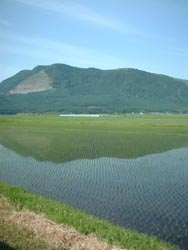 |
One of the things that makes Kyushu such a nice place to visit (especially after living in smoggy Osaka for 8 months) is the freshness of the air. I was breathing deep the entire time I was there and trying to soak in as much of it as possible. Another thing that is great about Kyushu is all the nature. The view from a Kyushu train (pictured on the left) is much different from the concrete jungle I'm use to gazing upon out of an Osaka train. Kyushu is the "traditional" Japan I imagined from stories and movies I saw before coming to Japan. And it was good to finally see that side of things for a change of pace. Click Here to download a 20 second video clip of this train ride. |
 |
Still
on that first day I went
to see some of the famous mountains of Kyushu closer up. One of them (on right) was Mt. Aso which is an active Volcano. The first I've ever seen coming from the flatlands of Columbus, OH. |
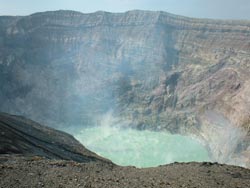 |
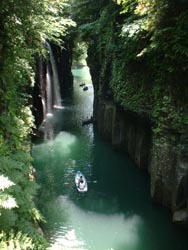 |
That first night I relaxed in a traditional Japanese style hot spring and enjoyed the peace and quiet of a warm Kyushu night. The next day I got up early and headed down to Takachiho Gorge (pictured on the left). The gorge was cut by the Gokase River through the lava of Mt. Aso. It is filled with beautiful water, plants, rocks, and falls. And once I had climbed down to the bottom I got to row through the gorge in a boat. It was probably the first time in my life that I actually felt like I was inside a postcard. Then it was back to another train with beautiful views. This time the train curved around the base of mountains and winded its way along a gorgeous river (pictured at below this paragraph on the left hand side). |
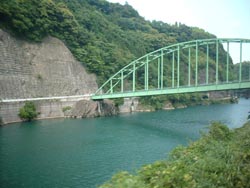 |
The
low point of the trip was
when I took a 4,000 Yen plus Taxi ride to go to Eto Land (where one can ski on astro turf etc.) only to find it closed. That night though I stayed at a Log Cabin Onsen (right) in Yufuin and everything was well once again. |
 |
 |
As the third day opened I found myself on a luxurious new bullet train (pictured on the left) with all leather seats and a hardwood floor. I was speeding to towards to city of Nagasaki. One of the famous things that I saw in Nagasaki was Oura Catholic Church. It's the oldest church in Japan, although I can't say it's a very interesting one from the inside. The outside (pictured on the right) is pretty nice though. |
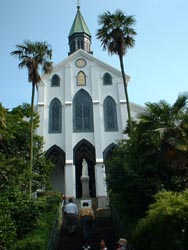 |
 |
Next
it was off to Glover Park
(left) where there is a rock shaped like a heart hidden somewhere along it's winding stone pathways. As you can see (on the right) I found it. Yeah! |
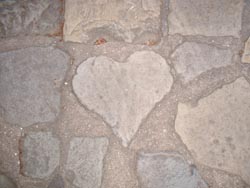 |
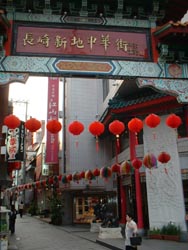 |
What I
ate was actually one of |
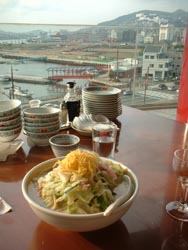 |
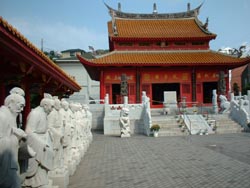 |
Another Chinese place I visited in Nagasaki was Koshi-Byo which is a Confucian Shrine. The Shrine was first built in 1893 by Chinese residents of Nagasaki with the support of the Ch'ing Dynasty. It was designed as a place of worship and learning for the Chinese community. Today it is no longer used as a primary school, but people can still worship there and there has also been a museum filled with Chinese artifacts behind the main shrine (pictured at left). After all of that I called it a night and went to my hotel to sleep. |
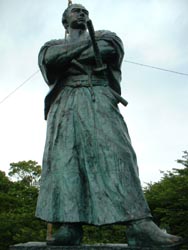 |
I got up early the next morning so that I could see some more of Nagasaki before I boarded another train and headed for Fukuoka. The statue on the left is of Ryoma Sakamoto. He was one of the most (if not the most) influential Samurai in Japanese history. He helped to overthrow the Shogun and lay the political foundation for the new Japanese government which modernized the country. He was basically the samurai that put an end to the samurai way of life. This statue stands atop a hill in one of Nagasaki's parks and overlooks the city. I visited it, as well as another statue dedicated to him, and a building where he built his first trading company. |
| After that
it was off to my final Nagasaki destinations, Peace Park, the Hypocenter,
and the A-Bomb Museum. Nagasaki was hit with the 2nd A-Bomb on August 9th, 1945. The bomb that was dropped was much larger then the one dropped 2 days before on Hiroshima. 73,884 people were killed. Another 74,909 were injured, most of which would die later from radiation. |
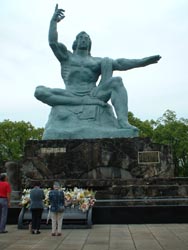 |
On the left is the Peace Statue in Peace Park. The right hand points to the threat of nuclear weapons while the left hand symbolizes tranquility and world peace. On the right is the Hypocenter. Directly above the black pillar is where the bomb went off. There was a group of Japanese school children in silent prayer when I was visiting. After that I visited the A-Bomb Museum which of course was full of all sorts of ghastly pictures and artifacts. |
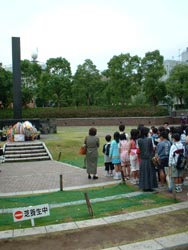 |
|
After that I boarded the train for Fukuoka. Fukuoka turned out to be one of the most boring cities I've ever been to in my life. I took a look at a guide book to see what there was to see in the city and ended up at a shopping mall where a circus performer from California was riding a unicycle and juggling fire. That was the coolest thing I saw in that entire city and that aint saying much. So I simply grabbed some dinner, boarded my plane, and was back home in time to see the Hanshin Tigers win their game that day. Despite the Eto Land fiasco and Fukuoka being the Bore Capital of Japan, my trip was marvelous and chock full of interesting sites, relaxation, good food, fresh air, and life long memories. |

CLICK HERE
To Return Home